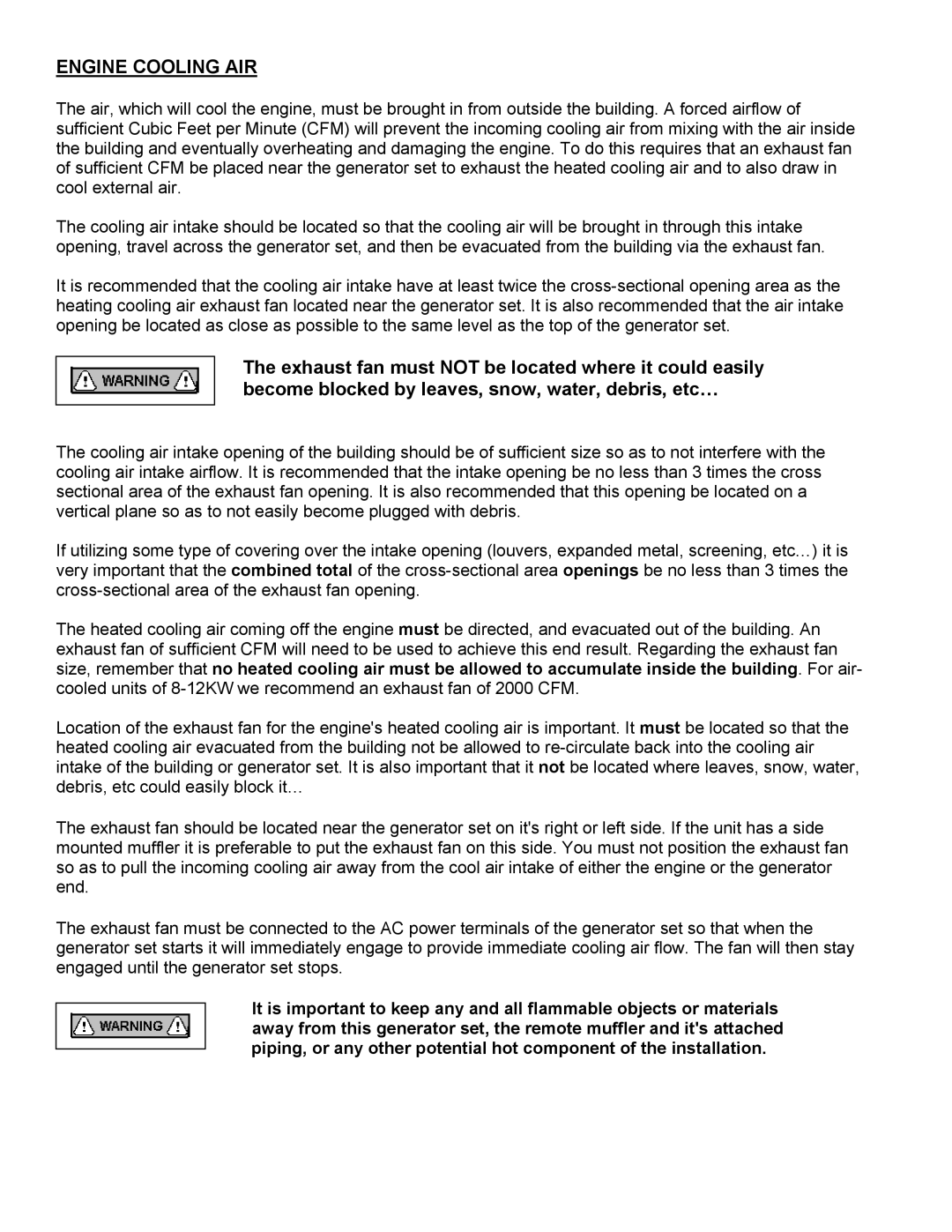
ENGINE COOLING AIR
The air, which will cool the engine, must be brought in from outside the building. A forced airflow of sufficient Cubic Feet per Minute (CFM) will prevent the incoming cooling air from mixing with the air inside the building and eventually overheating and damaging the engine. To do this requires that an exhaust fan of sufficient CFM be placed near the generator set to exhaust the heated cooling air and to also draw in cool external air.
The cooling air intake should be located so that the cooling air will be brought in through this intake opening, travel across the generator set, and then be evacuated from the building via the exhaust fan.
It is recommended that the cooling air intake have at least twice the
The exhaust fan must NOT be located where it could easily become blocked by leaves, snow, water, debris, etc…
The cooling air intake opening of the building should be of sufficient size so as to not interfere with the cooling air intake airflow. It is recommended that the intake opening be no less than 3 times the cross sectional area of the exhaust fan opening. It is also recommended that this opening be located on a vertical plane so as to not easily become plugged with debris.
If utilizing some type of covering over the intake opening (louvers, expanded metal, screening, etc…) it is very important that the combined total of the
The heated cooling air coming off the engine must be directed, and evacuated out of the building. An exhaust fan of sufficient CFM will need to be used to achieve this end result. Regarding the exhaust fan size, remember that no heated cooling air must be allowed to accumulate inside the building. For air- cooled units of
Location of the exhaust fan for the engine's heated cooling air is important. It must be located so that the heated cooling air evacuated from the building not be allowed to
The exhaust fan should be located near the generator set on it's right or left side. If the unit has a side mounted muffler it is preferable to put the exhaust fan on this side. You must not position the exhaust fan so as to pull the incoming cooling air away from the cool air intake of either the engine or the generator end.
The exhaust fan must be connected to the AC power terminals of the generator set so that when the generator set starts it will immediately engage to provide immediate cooling air flow. The fan will then stay engaged until the generator set stops.
It is important to keep any and all flammable objects or materials away from this generator set, the remote muffler and it's attached piping, or any other potential hot component of the installation.
